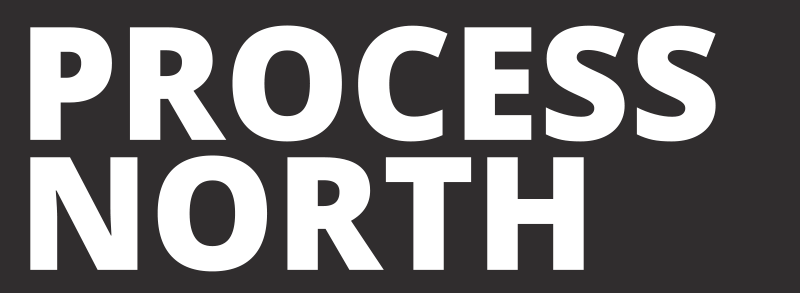Education / mediation
J Michael Wilhelm, A Fork in the Road: narrative problem solving for school leaders, Rowman and Littlefield (in association with the American Association of School Administrators), Lanham MD, 2018, pp.xi and 137.
Reviewed by Laura Kirkpatrick
J Michael Wilhelm’s new book delivers an interesting and thought-provoking read based on his experience of working in the American education system. He explores the stories we use, particularly when conflict occurs and looks at how taking a narrative approach used by many therapists / mediators can offer a practical alternative to traditional methods of problem solving. Whilst this book explores American themes, it has many applications for mediators and coaches working here in the UK.
The book encourages the reader to explore how a narrative approach to problem solving can be utilised across the whole school system. I would argue that this approach could well be implemented across a wide range of institutions / organisations to better enable them to understand how and why conflict develops and identify different avenues for resolution.
Wilhelm explains how stories form a natural part of our make up as human beings, whether that be orally, visually or in written form. The key component to any story is usually an issue / problem and from this the story unfolds, followed by analysis, potential solutions, assessment and evaluation; and the cycle continues. This is a traditional problem-solving approach to conflict. In the 1990’s John Winslade and Gerald Monk introduced an alternative revolutionary approach to problem solving – “Narrative Mediation” – in which clients are asked to explore their own narrative from different perspectives enabling them to develop an understanding of alternative solutions. There are parallels here for my own mediation practice in which I look to explore a client’s conflict through the story they tell me, using questions to enable exploration of the narrative, develop understanding and identify potential solutions.
“The Petition” explores a conflict that occurs between Danny (the school district’s Superintendent) and Mary (the School Board Chair) and I was struck by this extract from the case study presented – “Stepping away from a more direct role left the resolution in the hands of others. He was not at all comfortable with the loss of control. He’d taken Mary’s criticisms personally and felt the need to defend himself …”.
This made me stop and think about how often as mediators, we hear people say that they feel like they have no control. And when we observe this as mediators we see people react defensively, which can affect their ability to hear the message being delivered. They may have difficulty considering new perspectives as a result and will feel the need to defend their position. It’s interesting that in any relationship there is the perception of control by one or other of the people involved, and what those involved don’t realise that their control lies not with someone else but within themselves, in terms of how they choose to view and respond to the situation.
“Perception became the reality” – something that is true for a lot of people in conflict and certainly this appears to be the situation in the case study “A Christmas Story”. Whilst an interesting story and certainly one that has applications in our own school systems here in the UK, there is perhaps something wider that we can take from this when considering the exploration of perspectives with those in dispute. The following question frames this more eloquently than I could – “What would a path toward resolution look like for each of those affected?”
Reading “The Drive To The Small School” reminded me that, very often, the issue that presents on the surface masks the underlying concern or conflict. People can resort to delivering personal attacks because of anger and hurt feelings, which stems from our differences / opinions and how we communicate them. There are parallels with many of the mediation cases I’ve worked on in this story, as I’m sure many other mediators both in the USA and UK will readily be able to identify with, but it also raised some questions:
- As mediators, how can we support our clients within the constraints they are comfortable with?
- Should we ever push those boundaries in order to explore alternative pathways to resolution with our clients?”
“The School in the Community” and “If I Had My Way” are narratives about school communities, the different stakeholders and their very different perspectives. They raise the questions – “How can we as mediators / conflict resolution practioners help each stakeholder consider a perspective that’s different from their own? And, how could this affect the outcome?”
How we respond to the very differing needs of those involved in conflict is often fraught with challenges, as “The Parent’s Voice” outlines. Is it always possible to separate the people from the problem, remain objective and avoid being drawn into the emotion involved?
“Self-awareness is critical to choosing the most appropriate and effective response in any given situation” – this sentence in “This Whole Thing” just spoke to me as a mediator and made me reflect on how important this is on many levels. I believe it is one of the key attributes of a mediator. In my opinion, it’s key for those involved in conflict of any kind to be self-aware. It enables people to consider their choices and respond rather than react to any given situation.
“I’ll Help If I Can” reminded me of the different reactions people display when they are told to do something rather than engaged in a more collaborative problem-solving approach. The parallels here when working with opposing sides in a dispute are evident, experience tells me that the best responses are always gained from approaching a difficult situation with that collaborative approach rather than simply telling someone what they must do.
The issues of evolving technology and the dangers it can present are raised in “This Is Crazy”. The story whilst set in an educational context could very easily be replayed in a workplace, at home, in communities, etc. All too often, we hear stories from people in dispute or conflict, where the use of technology (emails, social media, file sharing, internet history, etc) has created a problem. The question it raises in this story, and one that can be used more widely, is “what would a possible resolution look like for each party?”
We will often come across people in dispute whose feelings about a current conflict / dispute / problem are strongly influenced by their past experiences of dealing with a similar difficult person / situation. “The Accident” explores one person’s perspective of this familiar issue that mediators face and encouraged me to reflect on the strategies we use to address these concerns.
“We’ve had mediation before” is often a phrase mediators will hear when working with parties in dispute. Very often well-meaning people think they know how to mediate based on a brief conversation with someone, a book they’ve read about it or an introductory workshop / briefing they’ve attended. “Take A Break” demonstrates the very real dangers of this and how someone who hasn’t been a trained as a mediator having a go at a mediating a dispute can potentially make the situation worse.
“The Open Door” is the final narrative in this book and resonated immediately with me because here we explore how one person’s perception of a situation can easily lead to misunderstanding. Without effective communication very often, people having missing information and so tend to create their own internal narrative that reinforces their perception of a situation. This narrative reminded me of the importance for us all to consider a situation as a whole, not just from our perspective but also the perspective of anyone else involved, as this can enable us to view things very differently and identify alternative explanations for behaviour we find difficult
Overall, “A Fork In The Road”, encouraged me to re-examine my role as a mediator and reflect on how I can develop my skills to work with the narratives that people in dispute have, to enable them to consider a wider perspective and find alternative solutions.
The reflections on the individual stories are the kind of approaches and techniques that we encourage at Solution Talk. The mediator’s ability to encourage those in dispute to consider a different perspective, to think about the whether to react or respond, to understand where their control lies and work toward mutually acceptable outcomes, is something we believe is extremely important and key to the work we undertake.
Review published February 2019
About the reviewer: Laura Kirkpatrick is at Solution Talk, which delivers mediation, conflict coaching and training. She has over 16 years’ experience working in the field of conflict resolution and is an Accredited Mediator, Professional Practice Consultant, Trainer and Restorative Justice Facilitator. Laura was appointed as a Director to the Board of the College of Mediators in October 2015.


